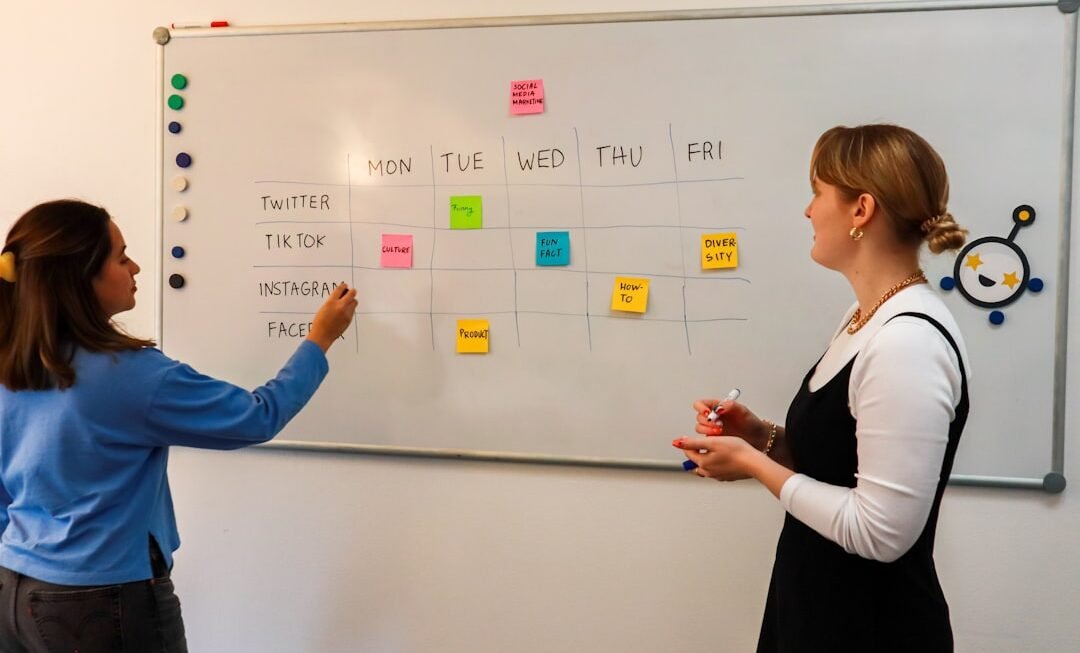The advent of technology has revolutionized numerous sectors, and education is no exception. Over the past decade, the rise of virtual AI tutors has transformed the landscape of learning, providing students with unprecedented access to personalized educational support. These intelligent systems leverage advanced algorithms and machine learning to deliver tailored assistance, adapting to the unique needs of each learner.
As educational institutions increasingly embrace digital tools, virtual AI tutors have emerged as a vital resource, bridging gaps in traditional teaching methods and enhancing the overall learning experience. The proliferation of online learning platforms and educational apps has further accelerated the adoption of virtual AI tutors. With the global shift towards remote learning, particularly during the COVID-19 pandemic, educators and students alike have recognized the potential of AI-driven solutions.
These virtual tutors can provide instant feedback, clarify complex concepts, and offer additional resources, making them invaluable companions in the educational journey. As a result, schools and universities are investing in AI technologies to complement their curricula, ensuring that students receive the support they need to thrive in an increasingly digital world.
Key Takeaways
- Virtual AI tutors are becoming increasingly popular in education, providing personalized learning experiences for students.
- These tutors offer real-time assistance to students, helping them with their studies and homework.
- The benefits of using virtual AI tutors in the classroom include improved student engagement and performance.
- Virtual AI tutors play a crucial role in personalized learning, catering to the individual needs and pace of each student.
- While there are challenges to overcome, integrating virtual AI tutors with traditional teaching methods can enhance the overall learning experience for students.
How Virtual AI Tutors Provide Real-Time Student Assistance
One of the most significant advantages of virtual AI tutors is their ability to provide real-time assistance to students. Unlike traditional tutoring methods, which may require scheduling and availability constraints, AI tutors are accessible 24/7. This immediacy allows students to seek help whenever they encounter difficulties, whether during late-night study sessions or while working on assignments.
The instant feedback mechanism enables learners to address misconceptions promptly, fostering a more effective learning environment. Moreover, virtual AI tutors utilize natural language processing (NLP) to understand and respond to student queries in a conversational manner. This capability allows for a more engaging interaction, as students can ask questions in their own words and receive explanations that are tailored to their level of understanding.
For instance, if a student struggles with a math problem, an AI tutor can break down the solution step-by-step, providing hints and encouragement along the way. This interactive approach not only enhances comprehension but also builds students’ confidence in their abilities.
The Benefits of Using Virtual AI Tutors in the Classroom
The integration of virtual AI tutors into classroom settings offers numerous benefits that extend beyond mere convenience. One of the most notable advantages is the ability to cater to diverse learning styles. Every student has a unique way of processing information; some may excel with visual aids, while others may prefer auditory explanations.
Virtual AI tutors can adapt their teaching methods based on individual preferences, ensuring that each student receives instruction in a manner that resonates with them. Additionally, virtual AI tutors can alleviate some of the burdens placed on teachers. With large class sizes and varying levels of student engagement, educators often struggle to provide personalized attention to every learner.
By incorporating AI tutors into the classroom, teachers can delegate routine queries and basic instruction to these systems, allowing them to focus on more complex teaching tasks and fostering deeper discussions. This collaborative approach not only enhances the overall educational experience but also empowers teachers to become facilitators of learning rather than mere transmitters of information.
The Role of Virtual AI Tutors in Personalized Learning
Personalized learning has gained traction as an effective educational strategy that tailors instruction to meet individual student needs. Virtual AI tutors play a pivotal role in this approach by analyzing student performance data and adapting their teaching strategies accordingly. By assessing a learner’s strengths and weaknesses through ongoing assessments and interactions, these intelligent systems can create customized learning paths that align with each student’s pace and style.
For example, if a student demonstrates proficiency in algebra but struggles with geometry, an AI tutor can adjust its focus to provide additional resources and practice problems specifically targeting geometry concepts. This level of personalization not only enhances academic performance but also fosters a sense of ownership over one’s learning journey. Students are more likely to engage with material that is relevant to their interests and abilities, leading to increased motivation and improved outcomes.
Overcoming Challenges with Virtual AI Tutors for Student Assistance
Despite the numerous advantages offered by virtual AI tutors, challenges remain in their implementation and effectiveness. One significant concern is the potential for over-reliance on technology. While these systems can provide valuable support, it is essential for students to develop critical thinking skills and problem-solving abilities independently.
Educators must strike a balance between utilizing AI tutors for assistance and encouraging students to engage with challenging material without immediate help. Another challenge lies in ensuring that virtual AI tutors are accessible to all students, regardless of socioeconomic status or technological proficiency. Disparities in access to devices and reliable internet connections can hinder some learners from fully benefiting from these resources.
To address this issue, schools must prioritize equitable access to technology and provide training for both students and educators on how to effectively use these tools in conjunction with traditional teaching methods.
Integrating Virtual AI Tutors with Traditional Teaching Methods
The successful integration of virtual AI tutors into traditional teaching methods requires careful planning and collaboration between educators and technology developers. Teachers must be equipped with the knowledge and skills necessary to incorporate these tools into their lesson plans effectively. This may involve professional development opportunities focused on understanding how AI tutors function and how they can complement existing curricula.
Furthermore, educators should consider blending synchronous and asynchronous learning experiences when utilizing virtual AI tutors. For instance, teachers can assign specific tasks for students to complete with the help of an AI tutor before coming together for group discussions or collaborative projects. This approach not only reinforces concepts learned through independent study but also fosters a sense of community among students as they share insights and strategies during class time.
The Future of Virtual AI Tutors in Education
As technology continues to evolve at a rapid pace, the future of virtual AI tutors in education appears promising. Innovations such as augmented reality (AR) and virtual reality (VR) are poised to enhance the capabilities of these systems further. Imagine a scenario where students can interact with 3D models while receiving guidance from an AI tutor that explains complex scientific concepts in real-time.
Such immersive experiences could revolutionize how students engage with content, making learning more dynamic and interactive. Moreover, advancements in machine learning will enable virtual AI tutors to become even more sophisticated in their ability to analyze student data and predict learning outcomes. By harnessing vast amounts of information from diverse sources, these systems could identify trends and patterns that inform instructional strategies on a broader scale.
As educational institutions increasingly adopt data-driven approaches, virtual AI tutors will play a crucial role in shaping personalized learning experiences that cater to the needs of future generations.
Ensuring the Effectiveness and Accuracy of Virtual AI Tutors
To maximize the potential of virtual AI tutors, it is essential to ensure their effectiveness and accuracy in delivering educational content. Continuous improvement through regular updates and refinements is necessary for these systems to remain relevant and reliable. Developers must prioritize user feedback from both students and educators to identify areas for enhancement and address any shortcomings in performance.
Additionally, rigorous testing protocols should be established to evaluate the accuracy of information provided by virtual AI tutors. This includes ensuring that content aligns with current educational standards and best practices. Collaborations between educational institutions and technology companies can facilitate this process by creating a feedback loop that informs ongoing development efforts while maintaining high-quality educational standards.
Addressing Privacy and Security Concerns with Virtual AI Tutors
As with any technology that collects user data, privacy and security concerns are paramount when it comes to virtual AI tutors. Educational institutions must implement robust data protection measures to safeguard sensitive information about students’ identities, performance metrics, and interactions with these systems. Compliance with regulations such as the Family Educational Rights and Privacy Act (FERPA) is essential to ensure that student data is handled responsibly.
Furthermore, transparency is crucial in building trust between educators, students, and technology providers. Schools should communicate clearly about how data is collected, stored, and utilized by virtual AI tutors. Providing parents and guardians with information about privacy policies can help alleviate concerns while fostering an environment where students feel safe engaging with these digital tools.
Training and Supporting Educators in Utilizing Virtual AI Tutors
For virtual AI tutors to be effective in enhancing student learning outcomes, educators must receive adequate training and support in utilizing these tools effectively. Professional development programs should focus on equipping teachers with the skills necessary to integrate AI tutors into their instructional practices seamlessly. This may include workshops on best practices for leveraging technology in the classroom or collaborative sessions where educators can share experiences and strategies.
Additionally, ongoing support is vital as educators navigate the evolving landscape of educational technology. Establishing mentorship programs or peer networks can provide teachers with access to resources and expertise as they experiment with incorporating virtual AI tutors into their teaching methodologies. By fostering a culture of continuous learning among educators, schools can maximize the impact of these innovative tools on student success.
Success Stories and Case Studies of Virtual AI Tutors in Student Assistance
Numerous success stories highlight the transformative impact of virtual AI tutors on student assistance across various educational settings. For instance, a pilot program implemented at a high school in California utilized an AI tutoring platform for mathematics instruction. Students who engaged with the system showed significant improvements in their test scores compared to those who did not use the tool.
Teachers reported that the personalized feedback provided by the AI tutor allowed them to identify struggling students more effectively and intervene promptly. Another compelling case study comes from an elementary school that integrated an AI reading tutor into its literacy program. The system adapted its reading materials based on each student’s proficiency level, providing targeted practice that aligned with their interests.
As a result, students demonstrated increased engagement with reading activities and improved literacy skills over time. These examples underscore the potential of virtual AI tutors not only to enhance academic performance but also to foster a love for learning among students. In conclusion, as education continues to evolve alongside technological advancements, virtual AI tutors are poised to play an increasingly integral role in shaping personalized learning experiences for students across diverse contexts.
Their ability to provide real-time assistance, adapt instruction based on individual needs, and complement traditional teaching methods positions them as valuable allies in the pursuit of academic success.












